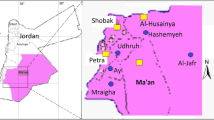Abstract
Water; it is the basic necessity of living things that exist in the world like air and food. An adult person consumes an average of 2 L of water per day by drinking. This consumed water contains a number of radionuclides. For this reason, it is important to determine the effect of these radionuclides on human biological structure. In studies up to now, researchers calculate activity concentrations of radionuclides in drinking water and calculate annual equivalent doses based on these activity concentrations. However, it is always overlooked that this consumption is constant in calculations. This results in the inability of drinking water to fully determine the effect on human health. In this study, a new and comprehensive perspective was introduced in the gamma analysis of drinking water. This viewpoint includes the activity concentration, the annual equivalent dose, lifetime average annual dose, and lifetime cancer risk assessment depending on age groups. Thus, it is aimed that the radionuclides present in water can make more reliable calculations on affecting human health and water cleaning in terms of radiation. The proposed model was applied to some drinking water sources in Gümüşhane. We found out that the obtained values of annual effective dose equivalent in all samples do not exceed the WHO recommended levels. The risk of cumulative cancer at the end of the 70th year of a person using these drinking water sources has been about determined as 1 in 100,000. Positive correlations were obtained between 226Ra, 232Th, and 40K concentrations versus pH. In addition, a negative correlation was obtained 40K concentration with conductivity.







Similar content being viewed by others
References
Abbasi A, Mirekhtiary F (2017) Gross alpha and beta exposure assessment due to intake of drink water in Guilan. Iran Radioanal Nucl Chem 314:1075–1081
Ahmad N, ur Rehman J, Rehman J, Nasar G (2019) Effect of geochemical properties (pH, conductivity, TDS) on natural radioactivity and dose estimation in water samples in Kulim, Malaysia. Hum Ecol Risk Assess Int J. https://doi.org/10.1080/10807039.2018.1526633
Alseroury FA, Almeelbi T, Khan A, Barakata MA, Al-Zahrani JH, Alali W (2018) Estimation of natural radioactive and heavy metals concentration in underground water. J Radiat Res Appl Sci 11(4):373–378
Asaduzzaman Kh, Mannan F, Khandaker MU, Farook MS, Elkezza A, Amin YM, Sharma S (2016) Natural radioactivity levels in commercialized bottled drinking water and their radiological quality assessment. Desalin Water Treat 57(26):11999–12009
Davis NS, DeWiest RJM (1966) Hydrogeology. Wiley, New York, p 463
DWAF Department of Water Affairs and Forestry (2002) Radioactivity Dose Calculation and Water Quality Evaluation Guideline for Domestic Water Use
Ehsanpour E, Abdi MR, Mostajaboddavati M, Bagheri H (2014) 3226Ra, 232Th and 40K contents in water samples in part of central deserts in Iran and their potential radiological risk to human population. J Environ Health Sci Eng 12:80–86
El Arabi AM, Ahmed NK, Salahel Din K (2006) Natural radionuclides and dose estimation in natural water resources from Elba protective area, Egypt. Radiat Prot Dosim 121(3):284–292
Fatima I, Zaidi JH, Arif M, Tahir SNA (2006) Measurement of natural radioactivity in bottled drinking water in Pakistan and consequent dose estimates. Radiat Prot Dosim 123(2):234–240
Goher ME, Mahdy ESM, Abdo MH, El Dars FM, Korium MA, Elsherif AAS (2019) Water quality status and pollution indices of Wadi El-Rayan lakes, El-Fayoum, Egypt. Sustain Water Resour Manag 5:387–400
Health Canada (2009) Guidelines for Canadian Drinking Water Quality—Radiological Parameters, Guideline Technical Document
IAEA International Atomic Energy Agency International (1996) Basic safety standards for protection against ionizing radiation and for the safety of radiation sources, Vienna: Safety Reports Series No. 115
ICRP International Commission on Radiological Protection (1991) Recommendations of the International Commission on Radiological Protection. ICRP Publication 60. Annals of the ICRP 21 (1–3)
Kitto ME, Kim MS (2005) Naturally occurring radionuclides in community water supplies of New York State. Health Phys 88(3):253–260
Kobya Y (2009) Doctorate Thesis, Karadeniz Technical University, Trabzon
Kobya Y, Damla N, Çevik U, Kobya Aİ (2011) Radiochemical characterization of mineral waters in the Eastern Black Sea Region, Turkey. Environ Monit Assess 182:415–422
Lin CC, Chu TC, Huang YF (2003) Variations of U/Th-series nuclides with associated chemical factors in the hot spring area of northern Taiwan. J Radioanal Nucl Chem 258(2):281–286
Mashiatullah A, Maryam B, Asma M, Yaqoob N, Robab U, Ghaffar A (2016) Activity concentration and dose estimation of 226Ra, 232Th, 40K and 137Cs in drinking water of selected areas of Punjab, Pakistan. Water Sci Technol Water Supply 16(1):253–262
WHO World Health Organization (2003) Guidelines for drinking-water quality. 3rd edn, Geneva
Acknowledgements
In this study, water samples collected for the 13.F5120.02.3 coded project supported by Gümüşhane University and their measurements were used. The other information, methods, models and results presented in this study are entirely owned by the authors of this manuscript.
Author information
Authors and Affiliations
Corresponding author
Additional information
Publisher's Note
Springer Nature remains neutral with regard to jurisdictional claims in published maps and institutional affiliations.
Rights and permissions
About this article
Cite this article
Karabıdak, S.M., Kaya, A. & Kaya, S. Cancer risk analysis of some drinking water resources in Gümüşhane, Turkey. Sustain. Water Resour. Manag. 5, 1939–1949 (2019). https://doi.org/10.1007/s40899-019-00338-x
Received:
Accepted:
Published:
Issue Date:
DOI: https://doi.org/10.1007/s40899-019-00338-x




